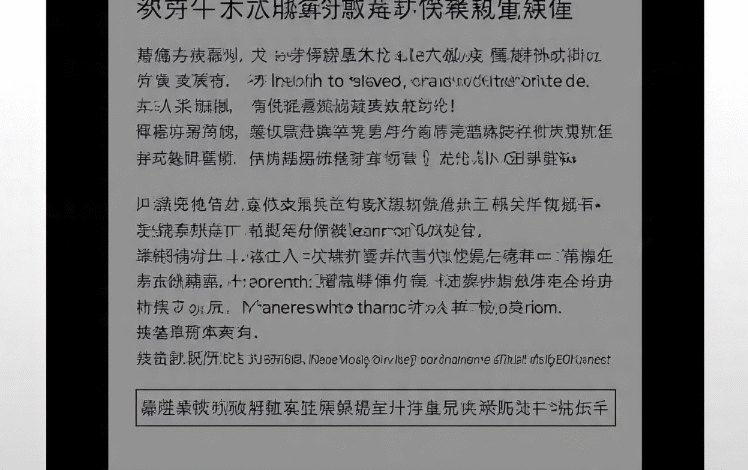Translate English to Chinese: A Complete Guide

Translating English to Chinese can be both exciting and challenging. English is widely spoken around the world, while Chinese, especially Mandarin, is one of the most spoken languages globally. Many people want to translate English to Chinese for travel, business, education, or personal reasons. In this guide, we will explain everything you need to know about translating English to Chinese.
Why Translate English to Chinese
There are many reasons people translate English to Chinese. China is a large country with a rich history and a growing economy. Knowing Chinese can help in business, travel, and communication. Many global companies work with Chinese partners, so translating documents from English to Chinese becomes necessary.
Students also translate English texts into Chinese to understand school materials or improve language skills. Travelers use translations to read signs, menus, or guides. Even online communication often needs translation, especially with social media and international friends.
Types of Chinese Language
When translating English to Chinese, it is important to know there are different types of Chinese. The main types are Simplified Chinese and Traditional Chinese.
- Simplified Chinese: Used in mainland China and Singapore. Characters are simpler and easier to read.
- Traditional Chinese: Used in Taiwan, Hong Kong, and Macau. Characters are more complex but keep the original shape.
Choosing the correct type of Chinese is very important. A wrong type can confuse the reader or make the translation incorrect.
Methods to Translate English to Chinese
There are several ways to translate English to Chinese. Each method has advantages and disadvantages.
1. Online Translation Tools
Online translation tools are popular because they are fast and easy to use. Some famous tools include Google Translate, DeepL, Bing Translator, and Youdao. You just need to type or paste English text, and the tool gives Chinese translation.
- Pros: Fast, free, easy to use.
- Cons: May not be 100% accurate, especially with complex sentences.
2. Translation Apps
Translation apps on smartphones are very useful for travelers and learners. Apps like Google Translate, Pleco, and Microsoft Translator can translate spoken words, text, or even images. You can point your camera at signs or menus, and the app shows Chinese translation instantly.
- Pros: Convenient, works offline in some apps, supports voice and image translation.
- Cons: Sometimes, grammar and context may be wrong.
3. Human Translators
For official documents, business contracts, or important materials, human translators are the best choice. They understand the meaning, culture, and tone of both languages. A professional translator ensures accuracy and avoids mistakes that machines may make.
- Pros: Accurate, professional, understands context and tone.
- Cons: Expensive, takes more time than online tools.
4. Translation Software
Translation software is designed for professional use. It helps businesses, students, and translators work with large texts. Software like SDL Trados, MemoQ, or Smartcat can help manage translations, maintain consistency, and speed up work.
- Pros: Professional, good for large projects.
- Cons: Expensive and may need training.
Challenges in Translating English to Chinese
English and Chinese are very different languages. Translating between them has challenges.
- Grammar Differences: English follows a subject-verb-object order, while Chinese can be more flexible.
- Idioms and Phrases: English idioms may not have direct Chinese equivalents. For example, “break the ice” needs careful translation.
- Tone and Politeness: Chinese has formal and informal ways of speaking. A wrong tone can sound rude.
- Characters and Pronunciation: Chinese uses characters, and each character has a meaning. Translating English sounds to Chinese (pinyin) can sometimes be confusing.
Despite these challenges, with practice and the right tools, anyone can translate English to Chinese successfully.
Tips for Accurate Translation
Here are some tips to make English to Chinese translation more accurate:
- Understand the context: Know the purpose of the text. Is it for business, education, or casual use?
- Use reliable tools: Online tools are helpful but always double-check with dictionaries or native speakers.
- Learn basic Chinese grammar: Understanding sentence structure helps in better translation.
- Check cultural differences: Some words may need adaptation to fit Chinese culture.
- Proofread translations: Always review translations to correct mistakes and improve readability.
Learning Chinese for Better Translation
Translating English to Chinese becomes easier if you know some Chinese. Learning basic vocabulary, grammar, and sentence structure helps. Many people use apps like Duolingo, HelloChinese, or Rosetta Stone to improve their Chinese.
Practicing reading Chinese newspapers, books, or websites also helps. Watching Chinese movies or listening to music improves understanding of the language in real-life contexts.
Applications of English to Chinese Translation
Translating English to Chinese is useful in many areas:
- Business: Contracts, emails, product descriptions, marketing content.
- Education: Learning materials, research papers, online courses.
- Travel: Maps, guides, signs, hotel instructions, menus.
- Communication: Chatting with friends, social media posts, emails.
- Technology: Software, apps, websites need translation to reach Chinese users.
Online Resources for English to Chinese Translation
There are many online resources for translation practice and help:
- Google Translate: Fast and easy for basic translation.
- Pleco: Useful for learning Chinese words and meanings.
- DeepL: High-quality translations for sentences and paragraphs.
- Youdao: Popular in China for accurate translations.
- Hanping: Helpful dictionary and learning app.
Conclusion
Translating English to Chinese is an important skill in today’s global world. Whether for travel, business, education, or communication, knowing how to translate can save time and avoid misunderstandings. You can use online tools, apps, software, or professional translators depending on your needs. Learning basic Chinese and understanding cultural differences can make translations more accurate. With practice, anyone can improve English to Chinese translation skills and communicate effectively.
FAQs
- What is the easiest way to translate English to Chinese?
The easiest way is to use online translation tools or apps like Google Translate or Pleco. For simple sentences, these tools are fast and effective. - Should I use Simplified or Traditional Chinese?
Use Simplified Chinese for mainland China and Singapore. Use Traditional Chinese for Taiwan, Hong Kong, and Macau. - Can machines translate perfectly from English to Chinese?
No, machines may make mistakes, especially with idioms or complex sentences. Human proofreading is recommended for important texts. - Is learning Chinese necessary for translation?
It is not necessary, but knowing basic Chinese improves translation accuracy and understanding of context. - How can I improve English to Chinese translation skills?
Practice regularly, use dictionaries, learn grammar, watch Chinese media, and ask native speakers for feedback.



